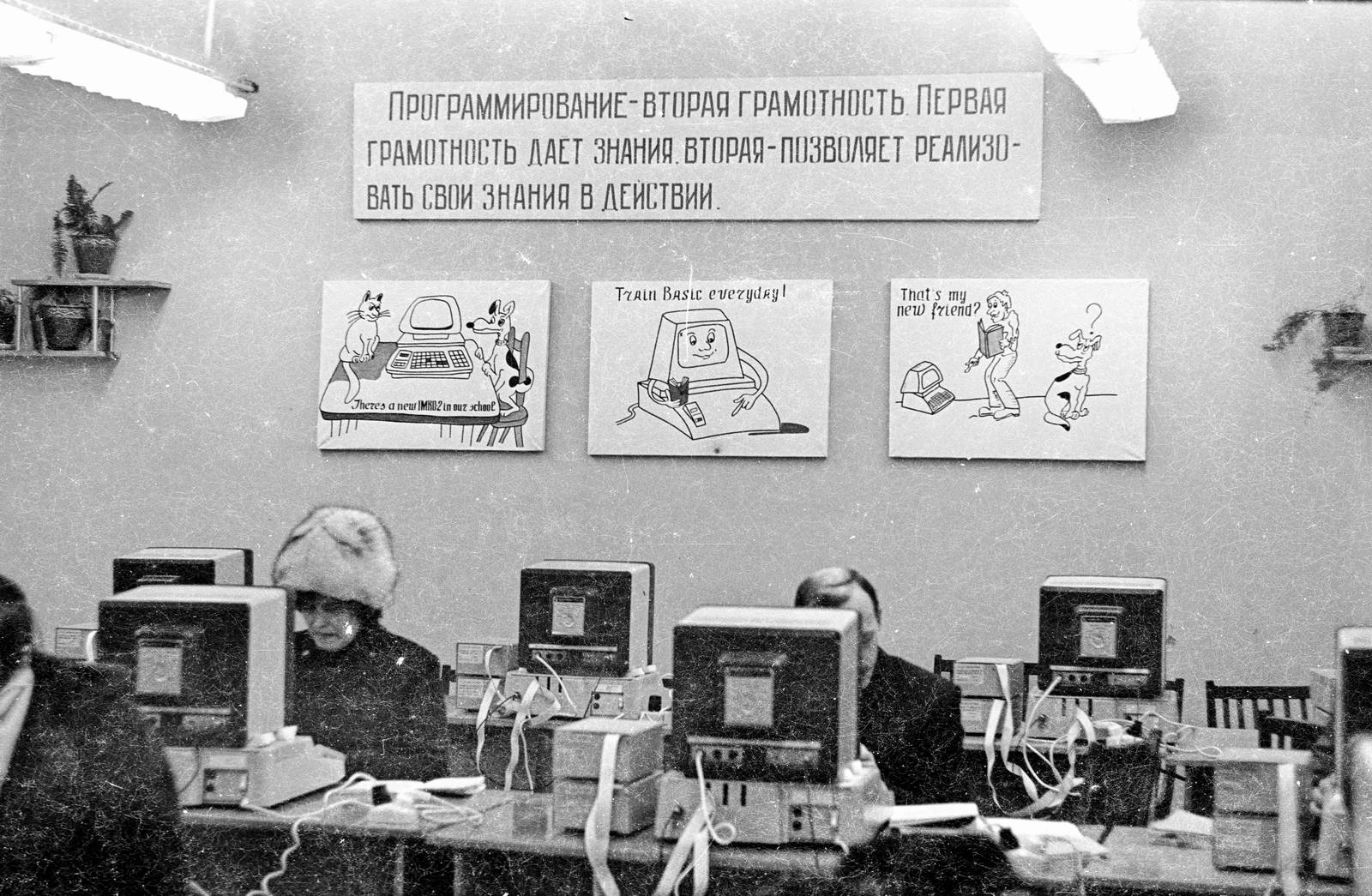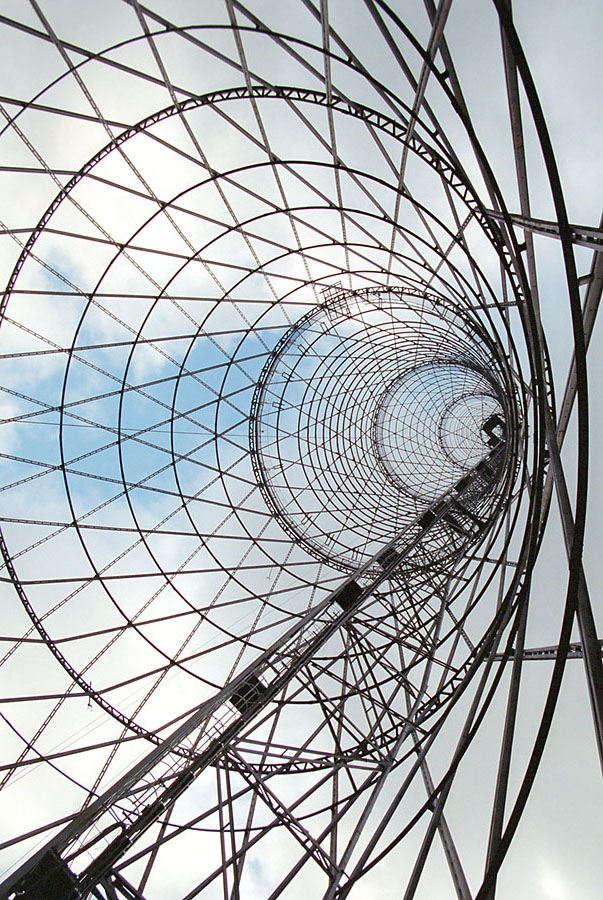|
RELCOM
RELCOM or Relcom (), an acronym for "RELiable COMmunications" is a computer network in Russia. Network It was launched in the Soviet Union on August 1, 1990 in the Kurchatov Institute in collaboration with DEMOS co-operative (although the engineering team at DEMOS at the time consisted mostly of Kurchatov Institute employees, some key members ( Mikhail Davidov, Vadim Antonov, Dmitry Volodin) in the RELCOM team were never employed by Kurchatov Institute). It became one of the first Russian computer networks (and the first commercial internet service provider in the USSR) and its development led to the emergence of the Runet. Initially it was purely e-mail network based on the UUCP protocol. During the Soviet coup attempt of 1991 the Relcom network was used to spread news about the event worldwide while the coup perpetrators were trying to suppress mass media activity through the KGB. [...More Info...] [...Related Items...] OR: [Wikipedia] [Google] [Baidu] |
Computing In The Soviet Union
The history of computing in the Soviet Union began in the late 1940s, when the country began to develop its Small Electronic Calculating Machine (MESM) at the Kiev Institute of Electrotechnology in Feofaniya. Initial ideological opposition to cybernetics in the Soviet Union was overcome by a Khrushchev era policy that encouraged computer production. By the early 1970s, the uncoordinated work of competing government ministries had left the Soviet computer industry in disarray. Due to lack of common standards for peripherals and lack of digital storage capacity the Soviet Union's technology significantly lagged behind the West's semiconductor industry. The Soviet government decided to abandon development of original computer designs and encouraged cloning of existing Western systems (e.g. the 1801 CPU series was scrapped in favor of the PDP-11 ISA by the early 1980s). Soviet industry was unable to mass-produce computers to acceptable quality standards and locally manufactu ... [...More Info...] [...Related Items...] OR: [Wikipedia] [Google] [Baidu] |
Soviet Coup Attempt Of 1991
The 1991 Soviet coup attempt, also known as the August Coup, was a failed attempt by hardliners of the Communist Party of the Soviet Union (CPSU) to forcibly seize control of the country from Mikhail Gorbachev, who was Soviet President and General Secretary of the CPSU at the time. The coup leaders consisted of top military and civilian officials, including Vice President Gennady Yanayev, who together formed the State Committee on the State of Emergency (). They opposed Gorbachev's reform program, were angry at the loss of control over Eastern European states and fearful of the New Union Treaty, which was on the verge of being signed by the Soviet Union (USSR). The treaty was to decentralize much of the central Soviet government's power and distribute it among its fifteen republics; Boris Yeltsin's demand for more autonomy to the republics opened a window for the plotters to organize the coup. The GKChP hardliners dispatched KGB agents who detained Gorbachev at his dac ... [...More Info...] [...Related Items...] OR: [Wikipedia] [Google] [Baidu] |
Computer Network
A computer network is a collection of communicating computers and other devices, such as printers and smart phones. In order to communicate, the computers and devices must be connected by wired media like copper cables, optical fibers, or by wireless communication. The devices may be connected in a variety of network topologies. In order to communicate over the network, computers use agreed-on rules, called communication protocols, over whatever medium is used. The computer network can include personal computers, Server (computing), servers, networking hardware, or other specialized or general-purpose Host (network), hosts. They are identified by network addresses and may have hostnames. Hostnames serve as memorable labels for the nodes and are rarely changed after initial assignment. Network addresses serve for locating and identifying the nodes by communication protocols such as the Internet Protocol. Computer networks may be classified by many criteria, including the tr ... [...More Info...] [...Related Items...] OR: [Wikipedia] [Google] [Baidu] |
Science And Technology In Russia
Science and technology in Russia have developed rapidly since the Age of Enlightenment, when Peter the Great founded the Russian Academy of Sciences and Saint Petersburg State University and polymath Mikhail Lomonosov founded the Moscow State University, establishing a strong native tradition in learning and innovation. In the 19th and 20th centuries, Russia produced many notable List of Russian scientists, scientists, making important contributions in physics, astronomy, mathematics, computer sciences, computing, chemistry, biology, geology and geography. Russian inventors and engineers excelled in such areas as electrical engineering, shipbuilding, aerospace, weaponry, communications, Information technology, IT, nuclear technology and space technology. The crisis of the 1990s led to the drastic reduction of state support for science and technology, leading many Russian scientists and university graduates to move to Western Europe or the United States. In the 2000s, on the wave o ... [...More Info...] [...Related Items...] OR: [Wikipedia] [Google] [Baidu] |
Soviet Inventions
This timeline of Russian innovation encompasses key events in the history of technology in Russia. The entries in this timeline fall into the following categories: * indigenous invention, like airliners, AC transformers, radio receivers, television, artificial satellites, ICBMs * uniquely Russian products, objects and events, like Saint Basil's Cathedral, Matryoshka dolls, Russian vodka * products and objects with superlative characteristics, like the Tsar Bomba, the AK-47, and the Typhoon-class submarine * scientific and medical discoveries, like the periodic law, vitamins and stem cells This timeline includes scientific and medical discoveries, products and technologies introduced by various peoples of Russia and its predecessor states, regardless of ethnicity, and also lists inventions by naturalized immigrant citizens. Certain innovations achieved internationally may also appear in this timeline in cases where the Russian side played a major role in such projects. ... [...More Info...] [...Related Items...] OR: [Wikipedia] [Google] [Baidu] |
History Of The Internet In Russia
The Russian internet (also known as the runet) is a part of the Internet with its main content in Russian. According to data from August 2019 and studies conducted by W3Techs, 6.5% of the 10 million most popular Internet sites in the world use Russian. In 2013, according to these studies, the Russian language became the second most used on the Internet after English. Background In the USSR, the first computer networks appeared in the 1950s in missile defense system at Sary Shagan (first they were tested in Moscow at Lebedev Institute of Precision Mechanics and Computer Engineering). 1957 Sputnik crisis contributed to development of computer networks both in USSR and USA. The Sputnik-1 online trajectory digital data was collected at 70 tracking stations, transmitted binarily via telegraph and then calculated at the Computing Centre of the Academy of Sciences. In the 1960s, the massive computer network project called OGAS was proposed but failed to be implemented, though stimu ... [...More Info...] [...Related Items...] OR: [Wikipedia] [Google] [Baidu] |
KOI8-R
KOI8-R (RFC 1489) is an 8-bit character encoding derived from the KOI-8 encoding by the programmer Andrei Chernov in 1993 and designed to cover Russian, which uses the Russian subset of a Cyrillic script. KOI-8, on its turn, is an 8-bit extension of the KOI-7 encoding, which inherited a phonetic correspondence of Russian and Latin letters from the MTK-2 teletype code. As a result, Russian Cyrillic letters in KOI8-R are in pseudo-Latin alphabetical order rather than the normal Cyrillic one like in ISO 8859-5. Although this may seem unnatural, this has the useful effect that if the 8th bit is stripped, the text remains partially readable in any ASCII-based encoding (including KOI8-R itself) as a case-reversed transliteration. For example, "Код для обмена и обработки информации" (the Russian meaning of the "KOI" acronym) becomes ''kOD DLQ OBMENA I OBRABOTKI INFORMACII''. KOI-8 stands for ''8-bitnyy kod dlya obmena i obrabotki informatsii'' ( ... [...More Info...] [...Related Items...] OR: [Wikipedia] [Google] [Baidu] |
Kremvax
Kremvax was originally a fictitious Usenet site at the Moscow Kremlin, Kremlin, named like the then large number of Usenet VAXen with names of the form ''foo''vax. Kremvax was announced on April 1, 1984, in a posting ostensibly originated there by Soviet Union, Soviet leader Konstantin Chernenko. The posting was actually forged by Piet Beertema of Centrum Wiskunde & Informatica, CWI (in Amsterdam) as an April Fool's Day, April Fool's prank—"because the notion that Usenet might ever penetrate the Iron Curtain seemed so totally absurd at the time". Other fictitious sites mentioned in the hoax were moskvax and kgbvax. The actual origin of the email was mcvax, one of the first European sites on the internet. Six years later, Usenet was joined by DEMOS (ISP), demos.su, the first genuine site based in Moscow. Some readers needed convincing that the postings from it were not just another prank. Vadim Antonov, the senior programmer at Demos and the major poster from there until mid-199 ... [...More Info...] [...Related Items...] OR: [Wikipedia] [Google] [Baidu] |
California State University
The California State University (Cal State or CSU) is a Public university, public university system in California, and the List of largest universities and university networks by enrollment, largest public university system in the United States. It consists of 23 campuses and seven off-campus centers, which together enroll 461,612 students and employ 63,375 faculty and staff members. In California, it is one of the three public higher education systems, along with the University of California system, University of California and the California Community Colleges systems. The CSU system is officially incorporated as The Trustees of the California State University, and is headquartered in Long Beach, California. Established in 1960 as part of the California Master Plan for Higher Education, the CSU system has its roots in the California State Normal Schools that were chartered in 1857. It holds the distinction of being the leading producer of bachelor's degrees in the country, wit ... [...More Info...] [...Related Items...] OR: [Wikipedia] [Google] [Baidu] |
Computer Science
Computer science is the study of computation, information, and automation. Computer science spans Theoretical computer science, theoretical disciplines (such as algorithms, theory of computation, and information theory) to Applied science, applied disciplines (including the design and implementation of Computer architecture, hardware and Software engineering, software). Algorithms and data structures are central to computer science. The theory of computation concerns abstract models of computation and general classes of computational problem, problems that can be solved using them. The fields of cryptography and computer security involve studying the means for secure communication and preventing security vulnerabilities. Computer graphics (computer science), Computer graphics and computational geometry address the generation of images. Programming language theory considers different ways to describe computational processes, and database theory concerns the management of re ... [...More Info...] [...Related Items...] OR: [Wikipedia] [Google] [Baidu] |
UUCP
UUCP (Unix-to-Unix Copy) is a suite of computer programs and communications protocol, protocols allowing remote execution of commands and transfer of computer file, files, email and netnews between computers. A command named is one of the programs in the suite; it provides a user interface for requesting file copy operations. The UUCP suite also includes (user interface for remote command execution), (the communication program that performs the file transfers), (reports statistics on recent activity), (execute commands sent from remote machines), and (reports the UUCP name of the local system). Some versions of the suite include uuencoding, / (convert 8-bit binary files to 7-bit text format and vice versa). Although UUCP was originally developed on Unix in the 1970s and 1980s, and is most closely associated with Unix-like systems, UUCP implementations exist for several non-Unix-like operating systems, including DOS, OS/2, OpenVMS (for VAX hardware only), AmigaOS, classic ... [...More Info...] [...Related Items...] OR: [Wikipedia] [Google] [Baidu] |
Russia
Russia, or the Russian Federation, is a country spanning Eastern Europe and North Asia. It is the list of countries and dependencies by area, largest country in the world, and extends across Time in Russia, eleven time zones, sharing Borders of Russia, land borders with fourteen countries. Russia is the List of European countries by population, most populous country in Europe and the List of countries and dependencies by population, ninth-most populous country in the world. It is a Urbanization by sovereign state, highly urbanised country, with sixteen of its urban areas having more than 1 million inhabitants. Moscow, the List of metropolitan areas in Europe, most populous metropolitan area in Europe, is the capital and List of cities and towns in Russia by population, largest city of Russia, while Saint Petersburg is its second-largest city and Society and culture in Saint Petersburg, cultural centre. Human settlement on the territory of modern Russia dates back to the ... [...More Info...] [...Related Items...] OR: [Wikipedia] [Google] [Baidu] |






